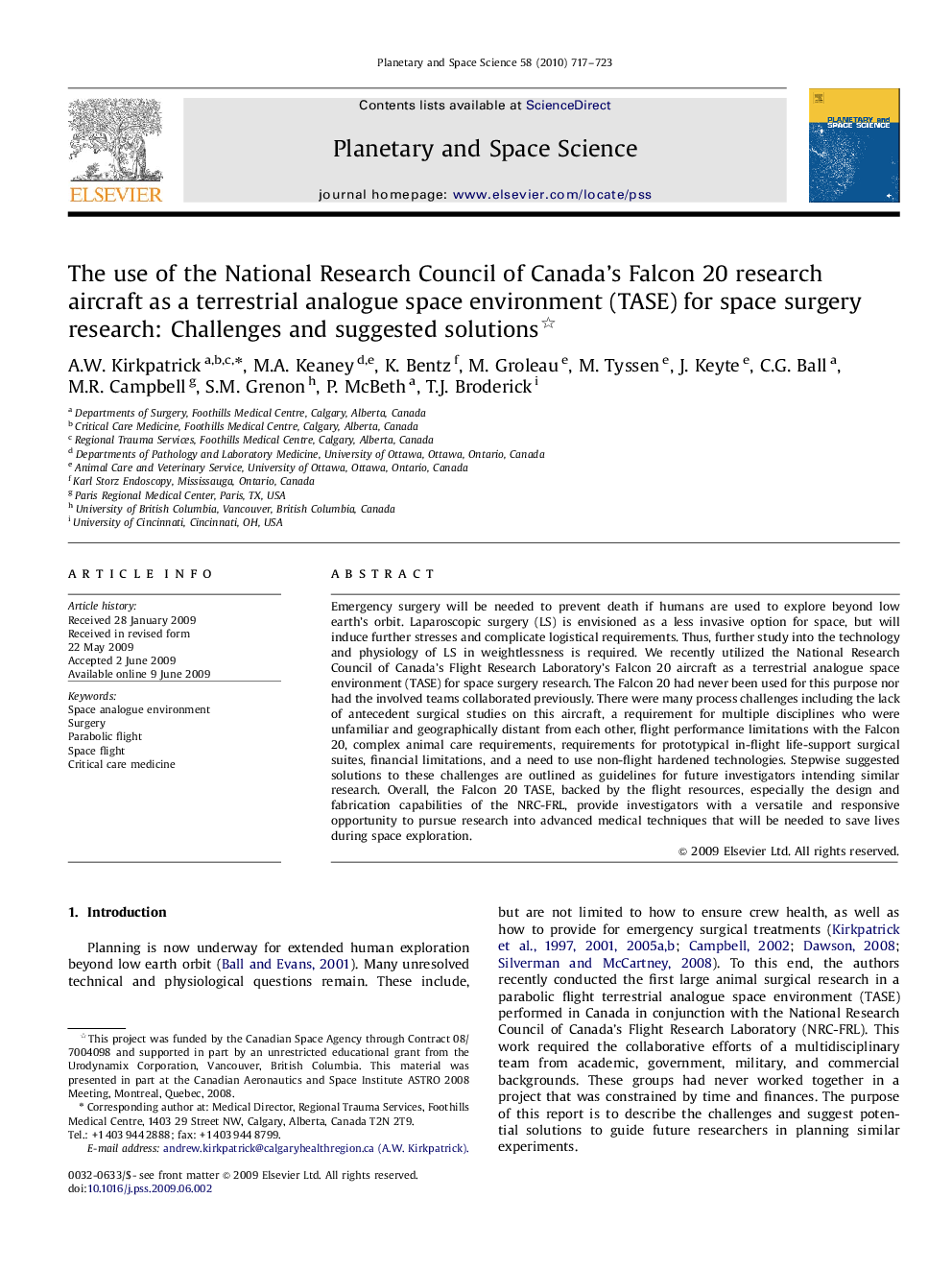| Article ID | Journal | Published Year | Pages | File Type |
|---|---|---|---|---|
| 1782005 | Planetary and Space Science | 2010 | 7 Pages |
Emergency surgery will be needed to prevent death if humans are used to explore beyond low earth's orbit. Laparoscopic surgery (LS) is envisioned as a less invasive option for space, but will induce further stresses and complicate logistical requirements. Thus, further study into the technology and physiology of LS in weightlessness is required. We recently utilized the National Research Council of Canada's Flight Research Laboratory's Falcon 20 aircraft as a terrestrial analogue space environment (TASE) for space surgery research. The Falcon 20 had never been used for this purpose nor had the involved teams collaborated previously. There were many process challenges including the lack of antecedent surgical studies on this aircraft, a requirement for multiple disciplines who were unfamiliar and geographically distant from each other, flight performance limitations with the Falcon 20, complex animal care requirements, requirements for prototypical in-flight life-support surgical suites, financial limitations, and a need to use non-flight hardened technologies. Stepwise suggested solutions to these challenges are outlined as guidelines for future investigators intending similar research. Overall, the Falcon 20 TASE, backed by the flight resources, especially the design and fabrication capabilities of the NRC-FRL, provide investigators with a versatile and responsive opportunity to pursue research into advanced medical techniques that will be needed to save lives during space exploration.
